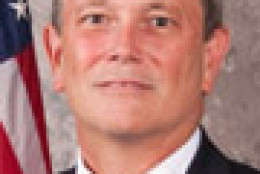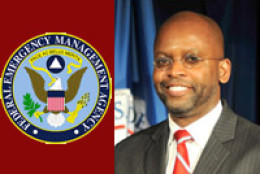Cybersecurity
-
Four new pieces of cybersecurity legislation give federal IT leaders some new tools to deal with network and information security. But that law may be responding to threats -- or problems -- that are being overcome by events. Responding to the security and privacy challenges of the Internet of Things may require a new level of thinking and legislation. Dave McClure is chief strategist of the Veris Group, and former Associate Administrator of the Office of Citizen Services and Innovative Technologies at the General Services Administration. In his Top 3 for 2015 and on In Depth with Francis Rose, he says the coming year will be the breakout for the Internet of Things.
December 30, 2014 -
New cybersecurity legislation President Obama signed recently may just be the start of Congress's efforts to improve the government's cyber defenses. The 114th Congress will look at other ways to give government IT leaders tools they need to improve security. Major General Dale Meyerrose (US Air Force ret.) was the first Chief Information Officer of the Office of the Director of National Intelligence. In his Top 3 for 2015, he suggests Congressional response isn't enough. On In Depth with Francis Rose, he said he believes ongoing tensions that social media highlights don't get enough attention from leaders in the federal government.
December 30, 2014 -
Although most agencies are making progress in securing their information and protecting themselves from cyber threats, they're still falling short of the Cross-Agency Priority (CAP) Goals set by the Obama administration.
December 30, 2014 -
The Department of Veterans Affairs investigated a security hole in a telehealth program. VA said personal information for more than 7,000 vets was been exposed, but the Federal Times reports both the VA and the vendor that provided the service said no data was stolen. Keith Trippie, chief executive officer of The Trippie Group, was former executive director of the Enterprise System Development Office at the Department of Homeland Security. In his Top 3 for 2015, he tells In Depth with Francis Rose even with the security risks telehealth initiatives will help government serve citizens better and save the government money in a couple different ways.
December 29, 2014 -
A flurry of cybersecurity bills passed through Congress after six years of no legal progress at all on the cyber front. Individually, none of the five cyber bills stand out above the rest. That's according to Chris Smith, vice president of for technology at AT&T Government Solutions, and former chief information officer of the Agriculture Department. On In Depth with Francis Rose, he said it's the passage of all five at once that's significant.
December 29, 2014 -
The Justice Department is taking its cyber crime-fighting efforts to a new level with the addition of a new cybersecurity unit. The unit will be operating under DoJ's Computer Crime and Intellectual Property section, and will serve to offer legal advice for cyber crime investigations worldwide.
December 29, 2014 -
Information Sharing Environment is helping to shape the policy and technology pieces to help implement the two-year-old White House's strategy on information sharing and safeguarding. The back-end attribute exchange is an expanding component to solve this challenge.
December 26, 2014 -
Adrian Gardner, FEMA's chief information officer, said he spent the last nine months looking at the agency's IT networks and systems to figure out their weaknesses and strengths. He said he plans on a three-stage approach to bring FEMA's technology into the 21st century.
December 25, 2014 -
The Veterans Affairs Department says veterans using a specific contractor for home telehealth services found a vulnerability that potentially could've exposed personal information of veterans. VA said the vulnerability has been closed and it has offered those affected credit monitoring services.
December 24, 2014 -
Kshemendra Paul, the program manager of the Information Sharing Environment, said his organization's tools and techniques are creating collaboration and trust among federal, state and local law enforcement officers. The Boston Marathon bombing is the most recent example of just how much the way intelligence is shared among authorities.
December 24, 2014 -
With each passing week, the stakes in the cybersecurity game get higher. Now Sony is reeling from a cyber attack U.S. officials believe originated in North Korea. This incident got Tom Temin wondering if the average federal agency has sufficient defenses against an attack like this. Or if it has enough resilience to recover. Jim Lewis, senior fellow at the Center for Strategic and International Studies, joined the Federal Drive with an update on the government's cybersecurity status.
December 23, 2014 -
The General Services Administration launched the Connect.gov portal in November and awarded two vendors contracts to provide secure electronic credentials. VA and USDA are among the first agencies to put applications on the cloud credential exchange. USPS is developing the technology infrastructure to allow this shared service to happen.
December 22, 2014 -
Reps. Jackie Walorski and Mike Coffman wrote separate letters to VA Secretary Bob McDonald asking for details about how the agency is addressing ongoing cyber challenges. Walorski asked VA to answer four questions about how it's protecting the identity of veterans using the eBenefits site.
December 22, 2014 -
Debra Roth hosts a roundtable discussion of the "hot" federal workforce topics in 2014, and what will be the big issues in 2015. December 19, 2014
December 19, 2014 -
If recent events on the cybersecurity front have scared the heck out of you, well, good. There's a lot you can do. How about start by reading the latest version of the government's premier publications on how to assess whether your security and privacy controls are adequate for today's hacker-plagued world? Dr. Ron Ross, FISMA Implementation Project and Joint Task Force Leader at the National Institute of Standards and Technology, joined Tom Temin on the Federal Drive to discuss what's in the newest revision of Special Publication 800-53-A.
December 19, 2014










